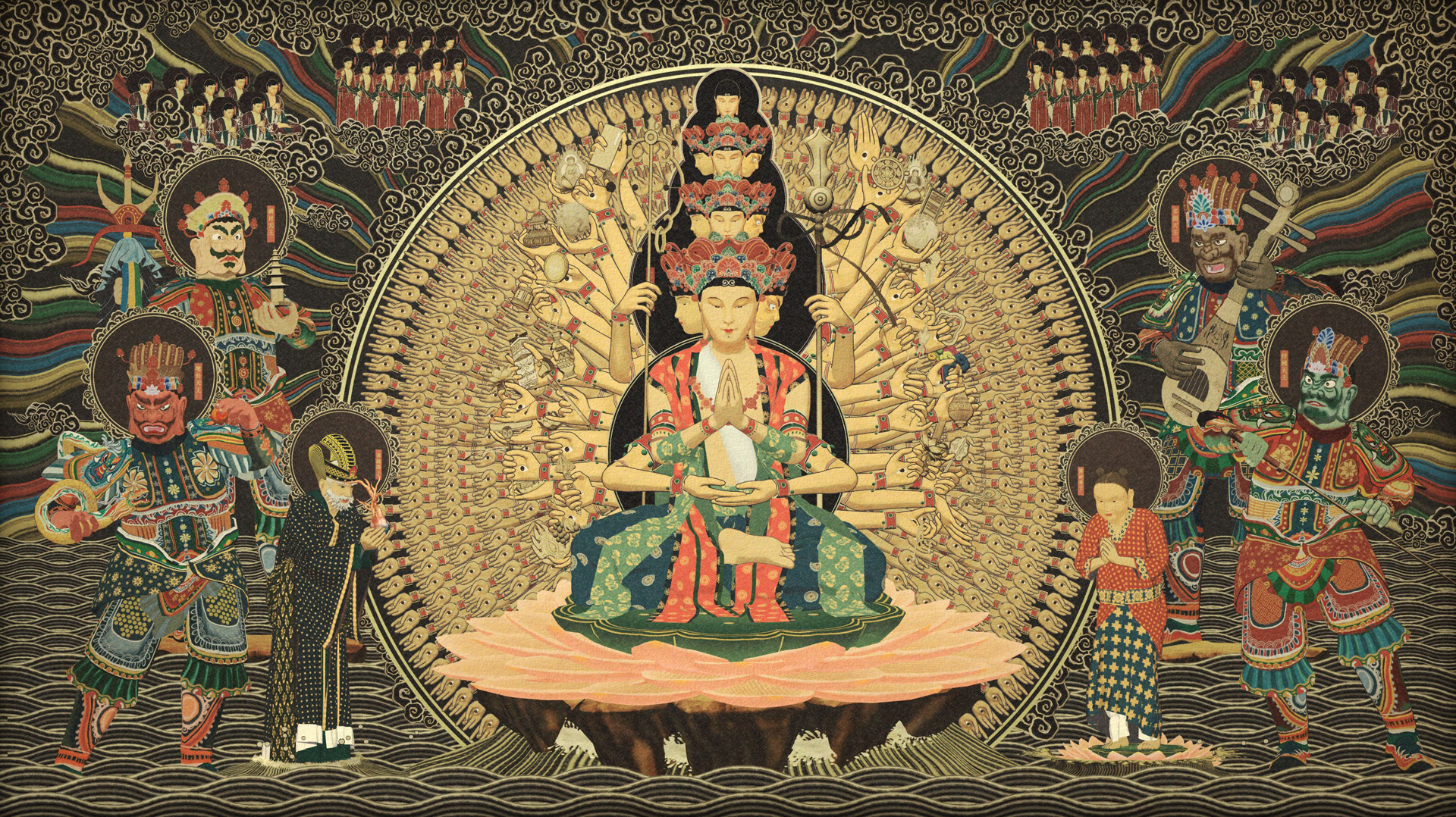Minji Park, Hyowon Jeong, Jiyun Jeong, Dain Kim, Jungbin Yoon, Haneul Jung, Kyeongju Hawng, Junghwan Sung: Painting Of Thousandhands Avalokitesvara
Artist(s):
Title:
- Painting Of Thousandhands Avalokitesvara
Exhibition:
Category:
Artist Statement:
Summary
Painting of Thousand-hands Avalokitesvara is a MediaArt based on the theme of “Painting of Thousand-hands Avalokitesvara(千手觀音圖)”, which paintings painted under the theme of Avalokitesvara(千手觀音) during or before Goryeo Dynasty. This artwork reproduces the original Buddhist culture, which accounts for a large portion of Korea’s culture archetype, in the three dimensional space.
Abstract
Painting of Thousand-hands Avalokitesvara is a media art based on the theme of Painting of Thousand-hands Avalokitesvara(千手觀音圖), which paintings painted under the theme of Avalokitesvara(千手觀音圖) during or before Goryeo Dynasty. We reproduces the original Buddhist culture, which accounts for a large portion of Korea’s culture archetype, in the three dimensional space. Avalokitesvara(千手觀音圖 ) appears in lotus flower on the center of artwork. Avalokitesvara is a Buddhist saint who saves people with a thousand-hands and a thousand eyes. Thousand-hands( ) literally symbolize a thousand hands, and metaphorically symbolize the ability and its appearance is very diverse. Also in the artwork, Avalokitesvara has 11 faces, indicating that through Avalokitesvara’s various appearances, they can save all of the people in various situations. On both sides of the Avalokitesvara, there are Four Devas( ), the four heavenly guardians of Buddhism. The Dragon King and the Sudhana( )appear After the appearance of the Four Devas. All of them gathered to listen to the teaching of the Avalokitesvara. Thousand-hands begin to unfold in the halo( )of the Avalokitesvara. After all the elements of the artwork such as the waves in the background and the Litany Buddha( ) appear, 42 hands which contained people’s wishes with Buddhism things( ) appear accordingly. Every time a 42-hands appears, the color of the thousand-hands in the halo changes and the thousand-hands take various hand movements( ).
Process Information:
Buddhist Artworks such as Painting of Thousand-hands Avalokitesvara(千手觀音圖) are only available in certain places, where temples and museums, and due to the nature of religious art, there is a lack of connection with the New Media. So, We decided to digitally remediation the work to overcome these limitations and to allow more people to see the beauty of Buddhist art in various places and times. We designed paintings that had been represented in two dimensions to represent movement in three-dimensional space in order to anicca( ) and pratityasamutpāda( )that are the core of Buddhist art. Background elements such as clouds and waves, as well as characters in the artwork, have something in common that they are all in a fluid state. This is a symbolic representation of the Buddhist doctrine that the world is always in progress. Digital has the nature of being easily and quickly distributed, and media art is an art genre that can be created in a format that did not exist using digital technology. Buddhist art serves as a medium for public access to Buddhist spirit. If digital advantages are added to this process, the existing limitations of public enjoyment of works will disappear.





